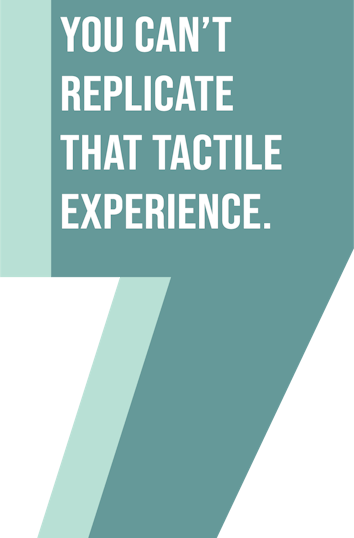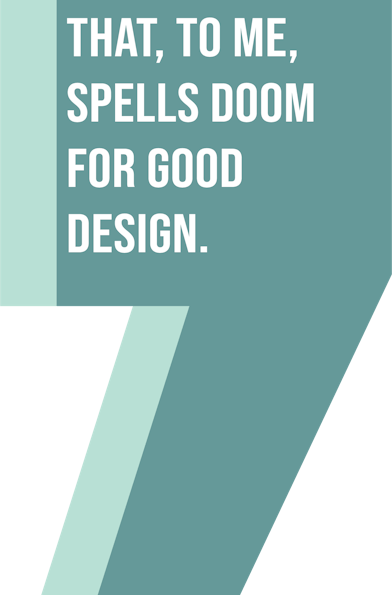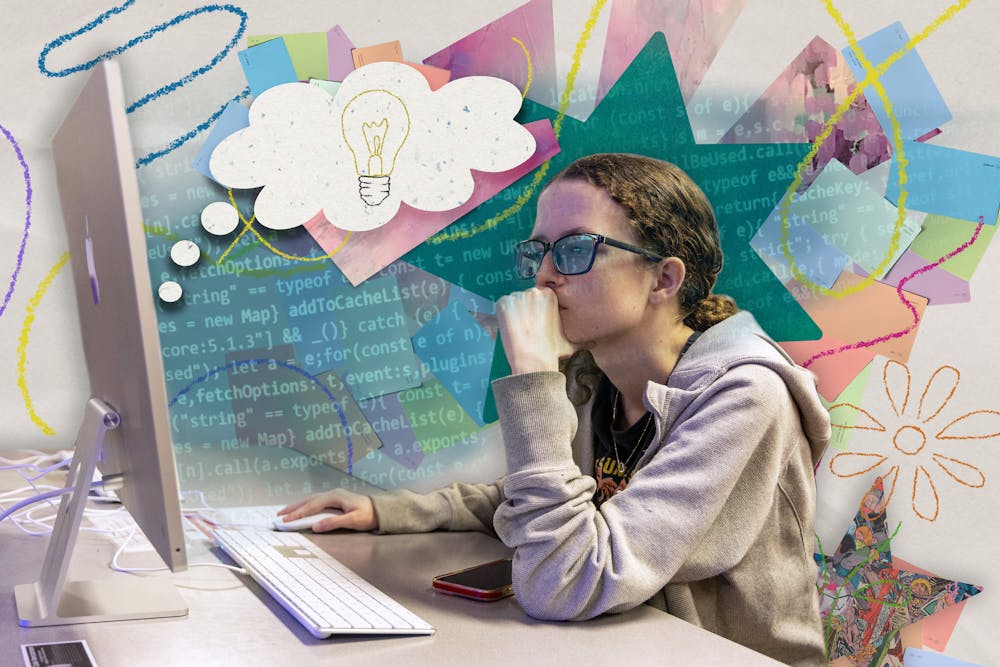As universities across the nation build partnerships with artificial intelligence companies, some USC students and faculty said the technology's gone from being controversial to just another tool, even in art and design.
Though automated art isn't a new phenomenon, it's more widespread and accessible than ever before. Some fear AI will wipe out design entirely, while others hope it simply enhances human work.
On June 20, USC announced a partnership that gave all students free access to ChatGPT. That includes the service's DALL-E image generator.
Jason Porter, a senior visual communications instructor, doesn’t see much of a point in banning his students from using AI and tries to integrate it into all his classes.
“Regardless of what I think about it, it’s happening,” Porter said. “AI is a fantastic tool, and I think if we’re not engaging with it, we are missing out.”
Porter will teach Fundamentals of Generative AI for Content Creation this spring. He said that while he understands concerns about AI eliminating jobs, it provides a new form of expression.
Fourth-year art studio student Preston Mack said he generally supports AI enhancing the work of designers, as long as it’s not generative. Many of his classmates have more negative views on AI, Mack said.
“I still feel like that there’s a heavy pushback,” Mack said. “I’ve noticed it’s become more accepted in spaces like engineering, programming, stuff that’s STEM and logic-based.”
AI has become increasingly common in many fields. Research firm Copyleaks' 2025 AI in Education Trends Report found that 90% of students have used it for academic purposes.
As for faculty, Graphic Design and Illustration Professor Marius Valdes said he's cautiously optimistic, tempered by concerns about the unpredictability of AI’s rapid development. While AI does not currently have an established place in his classroom, he will allow it, as long as there's a good reason.
“My new attitude this year is that, if you are using it, I just want to be made aware of why," Valdes said. “I can then ask the question, 'Well, could you have done that without it?'”
A new normal
Valdes said the rise of AI reminded him of the internet gaining a foothold when he was a fresh college graduate looking for a job.
“Half of my classmates had an opportunity to go work at CNN interactive, and I was like, 'What’s that?'” Valdes said. “But look where that went. Everybody now is online 24/7.”

Valdes is far from the first to compare AI's rapid advancement to that of the internet. In a recent study, independent research firm MacroStrategy Partnership estimated the "AI bubble's" impact at 17 times as large as its .com predecessor.
Porter said that while he initially found AI somewhat concerning, it’s quickly become just another aspect of his daily creative life.
“The idea of a new technological tool that can produce something different, I hopped on board immediately,” Porter said. “Once I realized what it could and couldn’t do, it became a lot less scary.”
Media Arts and Studio Art Instructor Catherine Chi said that while AI is readily accessible to students, there’s still a long road ahead before they all understand how to use it correctly.
The good
The implementation of AI in art will allow for art students and others outside of art to understand artistic rhythm quicker, said Shekeese Duvall, CEO of OTR Media Group and adjunct professor for the USC School of Visual Art and Design.
“If you’re generating a cat, what do you want that cat to look like?” Duvall said. “You have to have exploratory language around its color, what his nose looks like, the size of his claws, its wrinkles on his face, its eye color, all of these things that an artist is going to play with when drawing.”
Although Duvall said AI tools make it easier for people to hone their basic artistic skills, but many often overlook complex and structural rules. Duvall compared it when people understand Spanish through translation but don't understand the rules of it.
“We all know if you understand anything about another language, written speech is different from spoken speech," Duvall said. "Nine times out of 10, whatever you say based on what AI has told you what to say is not going to make sense to the Spanish listener because of all of the rules that you don’t understand about spoken language.”
The growth rate for each generation's technology has only increased and continues to do so, Chi said. She compared the public’s reactions of the rise of AI to its reactions to cellphones.
“It’s like if you gave a smartphone to people living in the 18th century or 19th century, and they’re probably going to go nuts,” Chi said. “So, I think that’s kind of how we feel right now, because AI just kind of jumped out of nowhere, and then (became) advanced so quickly."
And the bad
Lana Burgess, director of the McKissick Museum and clinical professor of art history and museum studies, played a key role in SVAD's exhibition "Generations: 100 Years of Art at USC at the McKissick".
Students had to conduct their own research about artists that have come through USC and determine their importance to not only the university, but their relevance in the development of art.
She said she worries that AI may take away from students’ ability to think deeply, which will ultimately have negative effects on art history.

“I’m hesitant,” Burgess said. “I think it’s taking away the opportunity to develop some of those critical thinking skills that are really necessary to do anything in life.”
Burgess’ students spend time researching to understand the works they study and preserve accurate artist information. They sifted through records and archives of the McKissick Museum and the South Caroliniana and Thomas Cooper Libraries to illuminate USC’s art history.
“You can’t replicate seeing the original, unique artifact,” Burgess said. “You can’t replicate that tactile experience, at least not that I understand at this point.”
Burgess said that art history is traditionally research-and-writing-heavy, and generative AI can't replicate those fundamental skills. Generative AI can be useful for idea development, but information can often be overlooked or missed, Burgess said.
“Not everything is digitized yet, so not everything is available, and it takes developing those investigative skills, as well as formulating your own research questions, to make original contributions," Burgess said.
That same critical thinking and inquiry extends beyond research to designers who are testing how it can aid people's lives, Mack said.
Mack is in the graphic design and illustration program and said he is often around classmates that don't trust AI and its potential influence. If people don't continue to question AI and its uses in everyday life, it could eliminate a large number of jobs, Mack said.
“The moment we start giving that job to it, the moment, like I said, we start losing art as a whole," Mack said. "We need to use it as a large language model, collaborate with it and help ourselves come up with better, more informed ideas and ultimately, better design."
The human element
Companies as large as Coca-Cola and McDonalds, along with USC, have been testing the waters of fully AI-generated advertising and design. Marvel Studios opted for AI over a designer for the intro sequence of 2023’s “Secret Invasion”, a television miniseries.
Mack said when he notices brands using generative AI instead of human-made work, it gives him a bad feeling.

"We are doing this because we need something, and either we don't feel like paying someone or don't feel like it's worth our time," Mack said. "That, to me, spells doom for good design."
Second-year art studio student Tiwaii Funchess, who is a tattoo artist, said that a digital tool can’t take his job quite yet.
“Some people in the industry use AI for their tattoo designs,” Funchess said. “A computer can’t do a tattoo.”
Valdes said that if AI art does truly become commonplace, its flaws will elevate human art’s quality.
“What makes us human is when you can see the human hand and the human thought,” Valdes said. “The stuff that looks like it was created by a human is going to stand out even more.”
No going back
Valdes said the most important thing he learned about AI from a lecture he attended at North Carolina State University was that it's not going away, and even if he doesn’t like it at times, his students need to understand it to succeed in today’s world.
Mack said there are still many important questions to answer before the art and design world fully embrace the tools.
“If it’s not checked by people who are willing to ask questions, then yeah, it is going to get out of control,” Mack said. “As a designer, I feel like it’s my job to work with and understand all of the up and coming technology.”
All things considered, Valdes said he is optimistic about the future of artists working with AI, without being replaced by it.
“I’m excited to see how it’s creatively used,” Valdes said. “I firmly believe there will be innovators who will do great things.”

